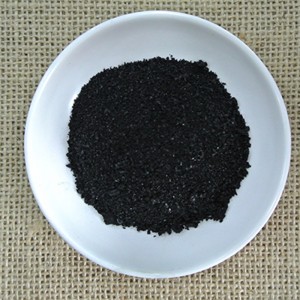sulphur dyes are mainly used for dyeing cotton fibers, and also for cotton/vinylon blended fabrics. It is dissolved in sodium sulfide and is an ideal choice for dark products of cellulose fibers, especially for Sulphur Black 240% and Sulphur Blue 7dyeing. The parent of sulphur dyes has no affinity to fibers, and its structure contains sulphur bonds (-S-), disulfide bonds (-S-S) or polysulfide bonds (-Sx-), which are reduced to sulfhydryl groups (-SNa) under the action of sodium sulfide reductant.Becomes a water-soluble leuco sodium salt. Leuco has a good affinity for cellulose fibers because of the large molecules of dyes, which produce large Van der Waals and hydrogen bonding forces with fibers. Although the color spectrum of sulphur dyes is not complete, mainly blue and black, the color is not bright, but its manufacture is simple, the price is low, the dyeing process is simple, color matching is convenient, and the color fastness is good.It should be noted, however, that certain sulphur dyes, such as sulphur black, may cause tender of Cotton Fiber.
The tender of the fiber needs to be paid attention to after the Sulphur Black 240% dye is used for dyeing. Some factors may increase the risk of fiber brittleness, such as excessive use of dyes, which not only increases the chance of brittleness, but also reduces the color fastness and makes washing more difficult. In addition, after dyeing, it should be fully washed to prevent unclean washing, and the floating color on the yarn is easy to decompose into sulphuric acid during storage, which makes the fiber brittle.
To reduce or prevent fiber tender, the following measures can be taken:
1. Limit the dosage of sulphur black dye: the dosage of mercerizing special primary color dye shall not exceed 700 G/package.
2. After dyeing, wash thoroughly with water to prevent the floating color from decomposing into sulphur acid during storage.
3. Use anti-tender treatment agents, such as urea, soda ash, sodium acetate, etc.
4. The degree of tender of water scoured yarn is less than that of alkali scoured yarn.
5. Dry the dyed yarn in time to avoid the heating of wet yarn in the stacking process, resulting in the reduction of anti-brittleness agent content and pH value.
Post time: Mar-29-2024






